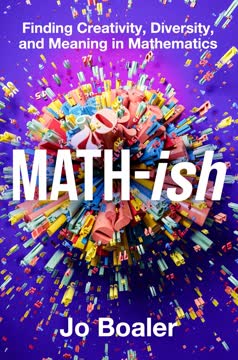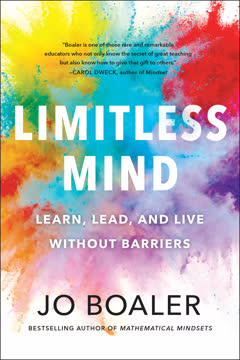Key Takeaways
1. Embrace Mathematical Diversity and Math-ish Thinking
Embracing these concepts of mathematical diversity and of math-ish are the keys to stepping into a rich understanding of mathematics that is equitably meaningful for all learners, regardless of education, gender identity, race or ethnicity, and beyond.
Value different perspectives. Mathematical diversity encompasses both the value of diversity in people (racial, cultural, social, etc.) and the diverse ways we can see and learn mathematics. Research shows that valuing different approaches leads to higher achievement, greater motivation, and enjoyment. When mathematics is presented narrowly, it excludes many people and limits understanding.
Think "ish" about math. The term "math-ish" describes the imprecise, estimated mathematics we use in the real world daily. Unlike the rigid precision often demanded in schools, real-world math involves estimations for things like age, distance, or recipe measurements. Embracing "ish" numbers and shapes is crucial for developing number sense and making math relatable and useful.
Open math to everyone. Rejecting narrow mathematics, which often focuses on one method and one answer, is essential for creating an accessible and dynamic experience. By valuing diverse ways of seeing and solving problems, we open the subject to many more students, enhancing their insights into numerical, spatial, and data-related situations.
2. Develop a Growth Mindset and Value Struggle
The implications of this research are profound—imagine that in every difficult situation you face, you feel strengthened, you feel encouraged to learn, you pay better attention to feedback, and you have more effective brain responses that increase your learning.
Struggle is productive. Neuroscientific studies show that the most productive times for our brains are when we are struggling and making mistakes. People with a growth mindset view mistakes as opportunities to learn, showing better error correction and greater neural markers of attention to feedback compared to those with a fixed mindset. This positive reaction to difficulty is key to persistence and higher achievement.
Embrace the "pit". Teachers and parents can help students develop comfort with struggle by reframing it as a positive sign of brain growth. Metaphors like the "pit of struggle" or "brain workout" can help learners understand that feeling challenged means their brains are forming and strengthening pathways. Providing challenging tasks with low floors and high ceilings allows everyone to access the work and experience productive struggle.
Mistakes are valuable. Celebrating mistakes, sharing famous examples of errors leading to discoveries (like Fermat's Last Theorem), and using non-evaluative feedback on errors are crucial practices. When students feel safe to make mistakes and learn from them, they develop resilience and a deeper understanding of mathematical principles, moving beyond the fear of being wrong.
3. Learn to Learn Through Metacognition
Metacognition is a major part of developing into a creative, independent, self-regulating, and flexible problem solver.
Think about thinking. Metacognition, or learning to learn, involves planning, tracking, and assessing one's own thinking. High-achieving students often use relational or self-monitoring approaches, which are metacognitive. Despite its proven impact on achievement and problem-solving, metacognition is rarely explicitly taught in math classes.
Use powerful strategies. Effective metacognitive strategies include:
- Taking a step back to understand the problem's core.
- Drawing the problem to engage visual pathways.
- Finding new approaches to foster flexibility.
- Reflecting on "Why?" to deepen understanding.
- Simplifying problems to make them accessible.
- Conjecturing and hypothesizing.
- Becoming a skeptic and demanding reasoning.
- Trying a smaller case to find patterns.
Foster reflection and self-awareness. Encouraging students to reflect on their learning journeys through journaling, class discussions, and targeted reflection questions helps them become self-aware learners. Providing rubrics and feedback that guide students on where they are, where they need to go, and how to close the gap empowers them to take responsibility for their progress.
4. See Mathematics as a Visual and Physical Experience
The groundbreaking work of neuroscientist Vinod Menon has shown that when people work on a mathematics problem, even an abstract number calculation, they can be helped by five different brain pathways.
Engage multiple pathways. Neuroscience reveals that mathematical thinking involves multiple brain pathways, including visual areas. Mathematicians' brains show greater activity in visual regions, even for non-visual tasks. Providing visual and physical representations of mathematical concepts stimulates different brain areas and enhances connectivity, leading to deeper understanding and higher achievement.
Develop mental models. Interacting with physical objects (like Cuisenaire rods or sugar cubes) or creating visual representations helps students build powerful mental models. These internal representations, like seeing patterns on a soccer field or imagining cubes filling a shoe, are critical for developing expertise and understanding abstract ideas.
Visualize numbers and operations. Activities like "groupitizing" (quickly seeing groups of dots) predict math achievement for years and can mitigate the effects of low income. Using fingers as a number line model or exploring visual representations of multiplication (area models) and fraction division (diagrams) makes abstract operations concrete and meaningful, fostering number sense and flexibility.
5. Focus on Concepts and Connections, Not Just Rules
Mathematics is amazingly compressible: you may struggle a long time, step by step, to work through the same process or idea from several approaches. But once you really understand it and have the mental perspective to see it as a whole, there is often a tremendous mental compression.
Concepts enable compression. Mathematics is fundamentally a conceptual subject, not just a list of rules. Learning concepts allows for "compression" in the brain, making knowledge easily retrievable and freeing up space for new learning. Students who only learn rules often fail to develop this conceptual understanding and lack the flexibility to solve unfamiliar problems.
Teach big ideas. Reorganizing curriculum standards into a smaller set of connected, big ideas allows for in-depth study. When students deeply understand foundational concepts, they serve as "reference frames" for organizing all other knowledge. This approach, supported by research and implemented in frameworks like California's, is more effective than superficial coverage of many disconnected topics.
Highlight connections. Mathematicians see their field as a web of interconnected ideas. Helping students see these connections—between different mathematical concepts (like patterns and algebra) and between math and the world (like geometry in art)—builds a richer, more flexible understanding. Tools like concept maps or sketchnotes can help students visualize and make these connections.
6. Cultivate Data Literacy for the Modern World
If we do not help our young people make sense of data and data representations, we leave them vulnerable to the post-factual world that is lying in wait for them.
Data is everywhere. The modern world is saturated with data, making data literacy essential for future employment and informed citizenship. Understanding how to read, interpret, and analyze data is crucial for navigating information, identifying misinformation, and making sense of real-world issues like health trends, economic data, or environmental changes.
Beyond computation. Data literacy involves more than just calculating. It includes:
- Interpreting situations and defining questions.
- Turning questions into computable forms.
- Performing computations (often with technology).
- Interpreting and analyzing results.
- Understanding the difference between correlation and causation.
Engage with real data. Introducing data early, even in kindergarten, and using real-world data in math lessons makes numbers meaningful. Activities like "data talks" (analyzing data visualizations) or having students collect and represent data about their own lives make learning relevant and engaging, fostering critical thinking about where data comes from and how it's presented.
7. Practice and Feedback Should Be Diverse and Meaningful
Deliberate practice is the engagement with meaningful ideas, through which students develop representational models, and it includes a clear feedback loop to provide opportunities for improvement.
Practice with purpose. Effective practice, or "deliberate practice," goes beyond rote memorization. It involves applying methods in new situations, considering contrasting cases, focusing on concepts, developing mental models, and working with nonstandard examples. This type of practice, unlike repetitive worksheets, builds adaptive expertise and prepares students for real-world problem-solving.
Use contrasting cases. Presenting students with contrasting examples (e.g., different types of scissors or triangles) helps them notice key features and deepen their understanding. Asking "why" one example works or doesn't work compared to another fosters reasoning and highlights important mathematical distinctions.
Provide learning-oriented feedback. Assessment should serve as a feedback loop for learning, not just a judgment of performance. Providing rubrics that outline learning goals, offering specific comments on work, and giving opportunities for revision help students understand where they are and how to improve. This iterative process encourages metacognition and a growth mindset, shifting the focus from getting the right answer to the process of learning.
8. Challenge Systemic Inequities by Broadening Math
Diversifying mathematics encourages inclusion of more diverse groups of students, which challenges even the most persistent of harsh inequalities.
Narrow math excludes. The traditional, narrow mathematics curriculum, largely unchanged since the 1800s, has created a highly inequitable system. Tracking students into different math pathways based on early test scores disproportionately affects students of color and those from low-income backgrounds, limiting their access to STEM fields and higher education.
Broaden pathways. Offering diverse high school math options, such as data science and statistics, alongside or integrated with traditional algebra and calculus sequences, can disrupt these inequities. Research shows that data science courses attract a more diverse group of students and increase their interest in STEM, providing a valuable pathway for those previously excluded.
Value diverse contributions. Recognizing the rich cultural history of mathematics, which spans civilizations and continents (from ancient Brazil and Africa to the Middle East and India), challenges the perception of math as a solely Western or abstract subject. Incorporating examples of math in diverse cultures and art forms makes the subject more inclusive and relatable.
9. One Teacher Can Make a Profound Difference
One single teacher can make a huge difference for anyone, and I encourage you to be the person who makes that difference for the people you know—and yourself.
Individual impact is powerful. Despite systemic challenges and narrow curricula, a single teacher can transform a student's relationship with mathematics. By introducing diverse ways of seeing and thinking about math, fostering a growth mindset, and valuing student ideas, teachers can change students' trajectories and set them up for future success, even in subsequent narrow math classes.
Teach how to see differently. When teachers encourage students to look at problems from multiple perspectives, draw visuals, or use different strategies, they equip them with tools that are valuable in any mathematical context. This flexibility and appreciation for diverse approaches stay with students and help them navigate future challenges.
Foster mathematical appreciation. Beyond achievement, teachers can help students see the beauty and wonder in mathematics. By connecting math to art, music, nature, and real-world phenomena, teachers can cultivate a sense of mathematical appreciation that makes the subject engaging and relevant, turning a potentially dreaded subject into something colorful and bright.
10. Cultivate a Warrior Mindset for Change
Your hero story depends on your reaction to the trouble and challenge, especially the ways you use your knowledge and your mindset to turn those experiences into strengths.
Believe in your expertise. Educators possess specialized pedagogical content knowledge (PCK) that is crucial for effective teaching. When working to change inequitable systems, it's vital to believe in your own expertise and not be deterred by those who lack this understanding but oppose change.
Practice empathy and build networks. Approaching disagreements with empathy can increase influence. Building a network of supportive allies is essential when facing pushback or harassment; connecting with others who share similar experiences provides strength and perspective.
Reframe pushback. View resistance and challenges not as personal attacks but as signs that your ideas have the potential to disrupt the status quo and make a real difference. Adopting a "warrior mindset," which involves acknowledging your own strength and vulnerability, staying authentic, and embracing the balance of dualities (yin and yang), helps you persist and turn challenges into strengths.
Last updated:
Review Summary
Math-ish by Jo Boaler receives mostly positive reviews, with readers praising its fresh approach to mathematics education. Many appreciate Boaler's emphasis on visual learning, creativity, and diverse problem-solving methods. The book challenges traditional math teaching and promotes a growth mindset. Some criticize perceived elementary errors and redundancy. Teachers and parents find the book inspirational and practical. Critics argue against discrediting narrow math and basic fact fluency. Overall, readers see the book as a potential game-changer in math education, though some remain skeptical of certain concepts.
Similar Books

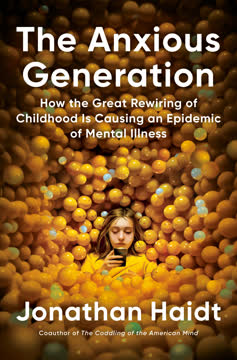


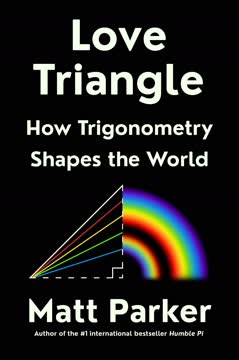
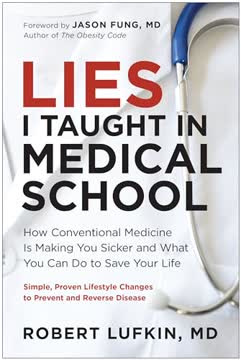
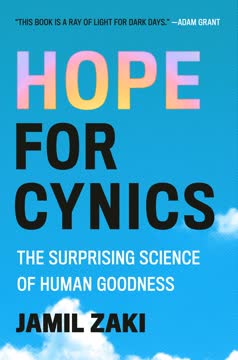
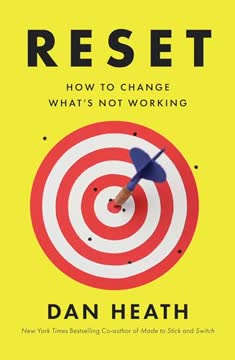
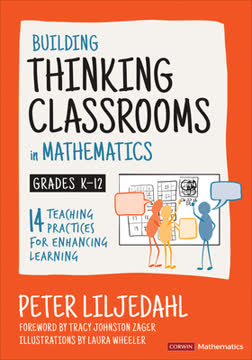
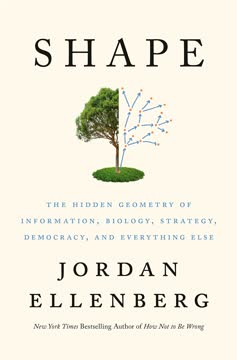
Download PDF
Download EPUB
.epub digital book format is ideal for reading ebooks on phones, tablets, and e-readers.
